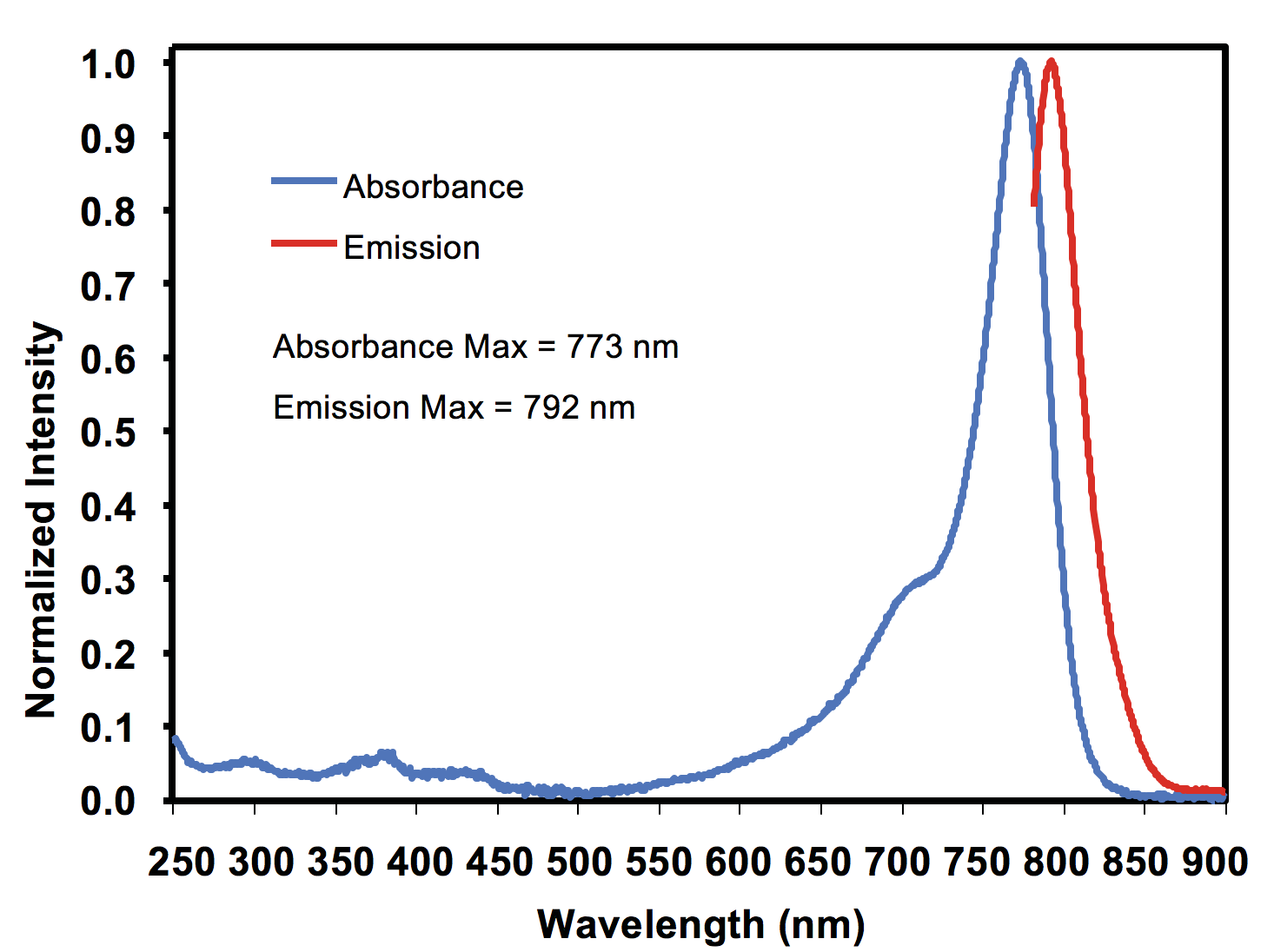IRDye® 800CW NHS Ester Near-Infrared Dye
Components
P/N | Description |
929-70020 | 0.5 mg |
929-70021 | 5.0 mg |
929-70022 | 50 mg |
929-70023 | 100 mg |
929-70024 | 250 mg |
929-70025 | 500 mg |
929-70026 | 1 g |
Product Description
IRDye 800CW NHS ester infrared dye is the dye of choice, with detection near 800 nm, for protein/antibody labeling applications Western blots, In-Cell Western™ assays, immunofluorescence, microscopy and nucleic acid applications requiring high labeling density. The NHS ester reactive group provides the functionality for labeling primary and secondary amino groups.
Specifications
- Molecular weight: 1166 g/mol
Correction factor at 260-280 nm: 3%
Storage
- Protect from light and moisture.
- Undissolved dye can be stored at -20 °C up to 1 year.
- Dye solubilized in water should be discarded after one use.
- Dye prepared in DMSO is stable for up to two weeks when stored at -20 °C and protected from light and moisture.
Absorption and Emission Spectra
| Solvent | Absorbance Maxima (nm) | Emission Maxima (nm) |
| Methanol | 778 | 794 |
| PBS | 774 | 789 |
| 1:1 PBS:Methanol | 777 | 791 |
Molar Absorptivity
| Solvent | Molar Absorptivity (L mol-1 cm-1) |
| Methanol | 300,000 |
| PBS | 240,000 |
| 1:1 PBS:Methanol | 270,000 |
Absorption and Emission Spectra in 1x PBS

Protocol
The following are general guidelines for using IRDye 800CW NHS Ester. See Bioconjugate Techniques, ed. G.T. Hermanson, Academic Press 2008, for further discussion of NHS ester dye chemistry.
Store lyophilized dye at -20°C protected from light and moisture when not in use.
Dissolve dye in water or DMSO (10-20mg/mL).
The choice of solvent for the dye is dependent on the stability of the protein in DMSO. Since a small amount of dye is needed to label large (i.e. >45 kDA) proteins, the amount of DMSO in the reaction is negligible and should not affect protein stability. However, since a proportionally larger amount of dye is required to achieve adequate labeling for a small protein (i.e. <45 kDA), the level of DMSO in the reaction is more likely to affect the protein stability. Dye solubilized in water should be discarded after one use. Dye prepared in DMSO is stable for up to two weeks when stored at -20°C and protected from light and moisture. Undissolved dye can be stored at -20°C up to 1 year.
Prepare proteins and antibodies in an azide-free phosphate buffer at pH 8.5.
Carry out labeling reactions for 2 hours at 20°C.
To label IgG antibodies (~160 kDa) at a final dye/protein ratio of 1:1 to 2:1, approximately 0.03 mg dye is required for every 1 mg protein.
The amount of dye required to achieve optimal labeling will vary for proteins of different molecular weights.
Purify labeled conjugates by commercially available spin/desalting columns or by extensive dialysis against 1x PBS or other compatible buffer.
Characterize labeled conjugates by UV/Vis and HPLC. Estimate the degree of labeling by measuring the absorbance of the dye at 778 nm and the absorbance of the protein at 280 nm.
The dye contribution to the 280 nm signal is 3%.
Determine the amount of free dye in the labeled conjugate by Size Exclusion Chromatography (SEC) using conditions which separate the dye labeled protein from the free dye.